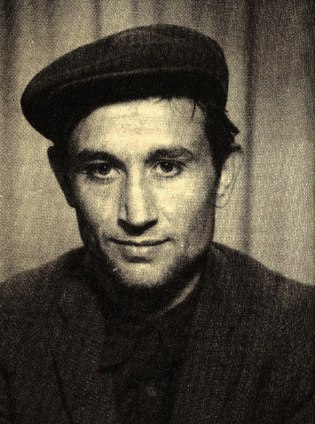Translated from Turkish by Batuhan S. Tumer & Espresso Stalinist
Ibrahim Kaypakkaya was the founder and leader of the Communist Party of Turkey / Marxist-Leninist (TKP/ML). He was also one of the most prominent Marxist theorists in Turkey, this critique of Kemalism being his most known work. This was the first left-wing revolutionary analysis of Kemalism. Kaypakkaya spoke out amidst cries of derision and shock from the other left-wing parties. It remains one of the most influential Marxist analyses of Kemalism.
In 1973, Kaypakkaya was arrested and imprisoned in the infamously brutal Diyarbakır Prison by the Turkish state and endured horrific torture for four months. He chose to die rather than give information, and was murdered by a shot to the head from his captors. Today he remains a heroic martyr and a symbol of resistance both for the Turkish left and the communist movement worldwide.
– E.S.
1. The Kemalist “revolution” was a revolution of the top stratum of the Turkish merchant bourgeoisie, feudal landlords, usurers and a few industrialists. So, the leaders of the revolution are the Turkish comprador bourgeoisie and feudal landowners. The middle bourgeoisie of national character took part in the revolution but were auxiliaries.
2. The leaders of the “revolution,” starting during the years of the anti-imperialist war of liberation, set out to collaborate and compromise with Allied imperialism in an underhand way. The Western imperialists took a benevolent stand towards the Kemalists and looked favourably at the possibility of a Kemalist power.
3. The collaboration of the Kemalists and imperialists became deeper and deeper after the peace agreement.
4. The Kemalist movement developed against the peasants and workers, and against the very possibility of an agrarian revolution.
5. As a result of the Kemalist movement, the semi-colonial and semi-feudal economic structure of Turkey remained intact.
6. In the social field, the new Turkish bourgeoisie developed from within the middle bourgeoisie of national character which set out to collaborate with imperialism, plus a section of the old Turkish comprador big bourgeoisie and plus the new bureaucracy took the place of the old comprador big bourgeoisie of the national minorities, plus the old bureaucracy and plus the Ottoman intelligentsia. The domination of some of the old feudal landowners, money-lenders and rich speculating merchants continued, though sometimes replaced with new ones. The Kemalists, as a whole, did not represent the interests of the middle class but the high class.
7. In the political sphere, the constitutional monarchy of the Ottomans aligned itself with the interests of the dynasties, the administration that replaced it, deciding to best respond to the interests of the new ruling class, has taken the form of a bourgeois republic. This administration is pseudo-independent, in political reality it is semi-independent, an administration bound to imperialism as a rule.
8. The Kemalist dictatorship, supposedly democratic, in reality is a fascist military dictatorship.
9. Kemalist Turkey became increasingly a semi-colony and part of the reactionary imperialist world and finally came to throw itself into the arms of the Anglo-French imperialists.
10. In the years following the War of Independence, the Kemalist government became the arch-enemy of worker’s revolution. During those times, the communist movement did not ally itself with the Kemalists against the old comprador bourgeoisie and clique of landlords which lost their dominant position (such an alliance never took place already), instead the Kemalists represent another clique of comprador bourgeoisie and landlords to overthrow. The task of the communist movement after toppling the Kemalist order down is to establish a people’s democratic dictatorship based on an alliance of workers and peasants under the leadership of the working class.

